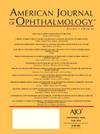Evaluating High Intraocular Pressure Criteria for Failure in Glaucoma Surgery: Impact on Estimated Success and Visual Field Rates.
IF 4.1
1区 医学
Q1 OPHTHALMOLOGY
引用次数: 0
Abstract
PURPOSE Review high intraocular pressure (IOP) thresholds used as failure criteria in glaucoma surgical outcome studies, evaluate their impact on success rates, and examine the relationship between surgical success criteria and visual field (VF) progression rates. DESIGN Systematic literature review and application of high IOP failure criteria to two retrospective cohorts. PARTICIPANTS Two cohorts of 934 and 1,765 eyes underwent trabeculectomy and deep sclerectomy (DS), respectively, with a median follow-up of 41.4 months for trabeculectomy and 45.4 months for DS. Visual field analysis was conducted on patients in the trabeculectomy cohort with ≥4 VFs in ≥2 years post-surgery. METHODS We applied literature-based high IOP failure criteria to the patient cohorts, defining failure as exceeding these IOP thresholds, loss of light perception, or need for additional IOP-lowering surgery. Success rates were estimated with Kaplan-Meier statistics, and Cohen's kappa statistic assessed the agreement among criteria in defining failure at 5 years. Linear mixed models estimated VF mean deviation (MD) progression rates based on success or failure status. MAIN OUTCOME MEASURES Kaplan-Meier success rates, Cohen's kappa, and MD progression rates RESULTS: From 2,503 initial studies, 277 were included, identifying 144 high IOP failure criteria. The 21-mmHg criterion variations showed success rates at 5 years ranging from 8.7% to 74.0% for trabeculectomy and 22.1% to 89.9% for DS. The median Cohen's kappa for 21-mmHg criteria indicated fair agreement (0.39 for trabeculectomy, 0.42 for DS). A subset of 199 trabeculectomy eyes were eligible for the VF analysis. Overall, the median (interquartile range) postoperative progression rate was -0.36 (-0.09 to -0.74) dB/year. Distributions of progression rates greatly overlapped between failure and success groups as defined by the various criteria. CONCLUSIONS The criteria for defining high IOP failure in glaucoma surgery are highly heterogeneous in the current literature. Varying high IOP criteria has a large impact on glaucoma surgery success rates, highlighting the need for standardized failure criteria to enable consistent interpretation and comparison across studies. IOP-based classifications are poor surrogates for postoperative VF progression rates. Long-term visual field rates provide a more consistent primary outcome measure and may be incorporated into composite success criteria.评估青光眼手术失败的高眼压标准:对估计成功率和视野率的影响。
目的:回顾青光眼手术结局研究中使用的高眼压(IOP)阈值作为失败标准,评估其对成功率的影响,并检查手术成功标准与视野(VF)进展率的关系。设计系统的文献综述和高IOP失效标准在两个回顾性队列中的应用。两组934和1765只眼睛分别接受了小梁切除术和深巩膜切除术(DS),小梁切除术和深巩膜切除术的中位随访时间分别为41.4个月和45.4个月。在小梁切除术队列中,术后≥2年VFs≥4的患者进行视野分析。方法:我们将基于文献的高IOP失败标准应用于患者队列,将失败定义为超过这些IOP阈值,光感知丧失或需要额外的降低眼压手术。使用Kaplan-Meier统计估计成功率,Cohen的kappa统计评估5年失败定义标准之间的一致性。线性混合模型估计基于成功或失败状态的VF平均偏差(MD)进展率。主要观察指标kaplan - meier成功率、Cohen’s kappa和MD进展率结果:从2503项初始研究中,纳入了277项,确定了144项高IOP失败标准。21毫米汞柱标准的变化表明,小梁切除术的5年成功率为8.7%至74.0%,退行性椎体滑移的5年成功率为22.1%至89.9%。21毫米汞柱标准的Cohen’s kappa中位值一致(小梁切除术0.39,DS 0.42)。199只小梁切除术眼的一个子集符合VF分析。总体而言,中位(四分位数范围)术后进展率为-0.36(-0.09至-0.74)dB/年。根据不同的标准,在失败组和成功组之间的进展率分布有很大的重叠。结论目前文献对青光眼手术中高IOP失败的定义标准存在很大差异。不同的高IOP标准对青光眼手术成功率有很大的影响,强调需要标准化的失败标准,以便在研究中进行一致的解释和比较。基于内窥镜的分类不能很好地替代术后VF进展率。长期视野率提供了更一致的主要结果测量,并可纳入综合成功标准。
本文章由计算机程序翻译,如有差异,请以英文原文为准。
求助全文
约1分钟内获得全文
求助全文
来源期刊
CiteScore
9.20
自引率
7.10%
发文量
406
审稿时长
36 days
期刊介绍:
The American Journal of Ophthalmology is a peer-reviewed, scientific publication that welcomes the submission of original, previously unpublished manuscripts directed to ophthalmologists and visual science specialists describing clinical investigations, clinical observations, and clinically relevant laboratory investigations. Published monthly since 1884, the full text of the American Journal of Ophthalmology and supplementary material are also presented online at www.AJO.com and on ScienceDirect.
The American Journal of Ophthalmology publishes Full-Length Articles, Perspectives, Editorials, Correspondences, Books Reports and Announcements. Brief Reports and Case Reports are no longer published. We recommend submitting Brief Reports and Case Reports to our companion publication, the American Journal of Ophthalmology Case Reports.
Manuscripts are accepted with the understanding that they have not been and will not be published elsewhere substantially in any format, and that there are no ethical problems with the content or data collection. Authors may be requested to produce the data upon which the manuscript is based and to answer expeditiously any questions about the manuscript or its authors.

 求助内容:
求助内容: 应助结果提醒方式:
应助结果提醒方式:


